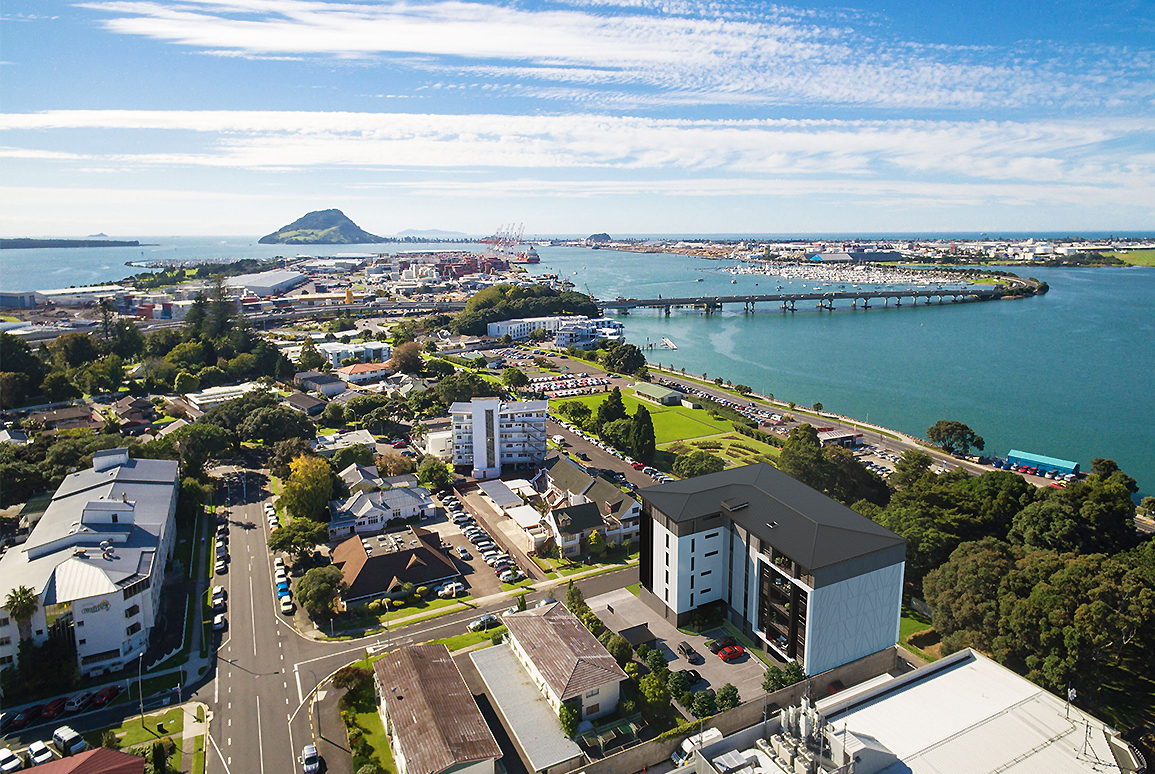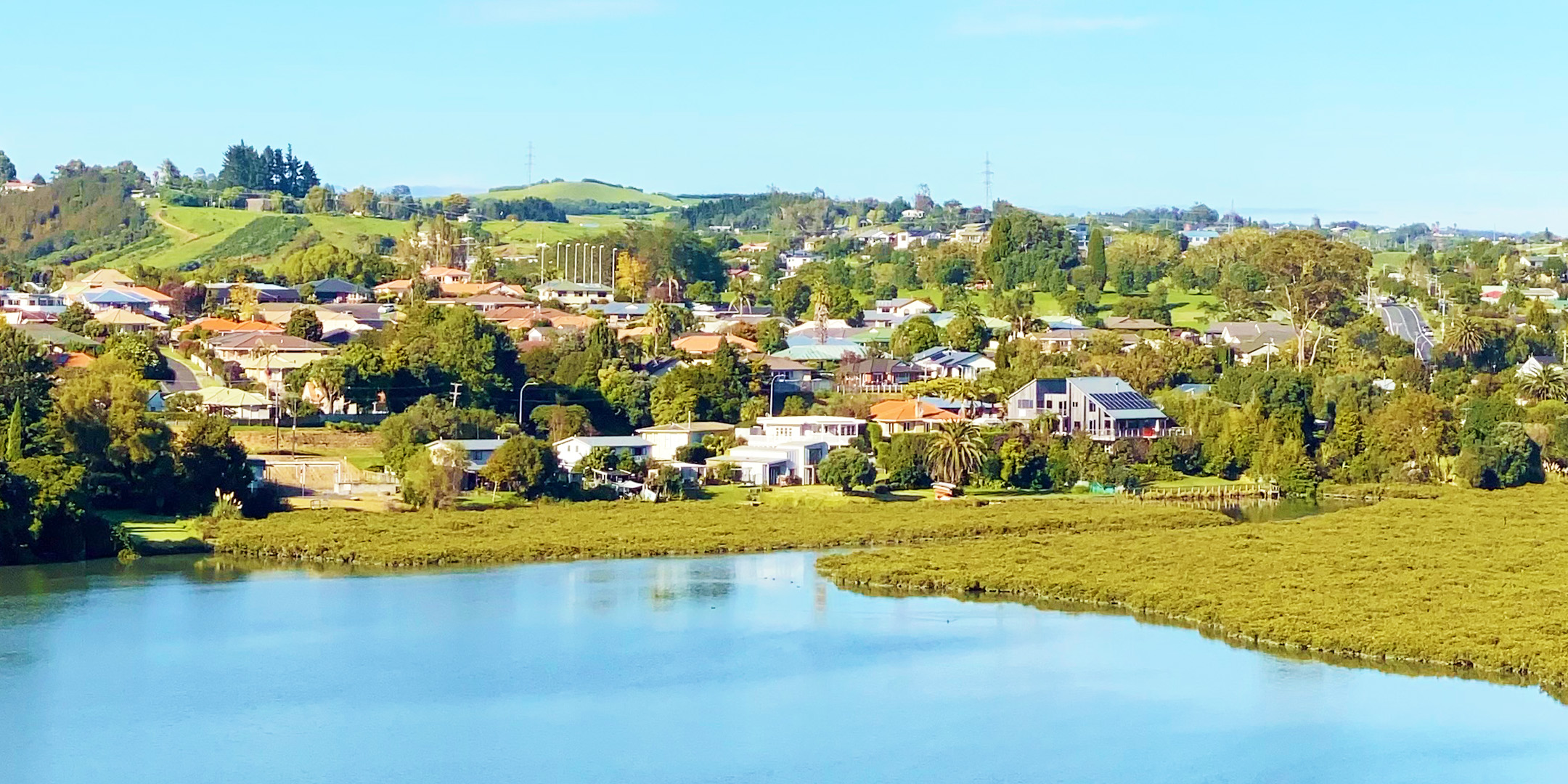Careful urban design and planning will strengthen Tauranga's reputation as an appealing city, say Morné Hugo and Matt Allott.

The recent emergence of medium and high-density housing in Tauranga has been a noticeable change to the traditional suburban form in the city and corresponds with the recent introduction of Plan Change 33 (Enabling Housing Supply), which is designed to facilitate urban intensification. Tauranga City Council introduced Plan Change 33 to address the growing demand for housing by increasing residential density in locations around the city centre; and near commercial nodes, main transportation corridors, and higher levels of service and amenity.
Plan Change 33 is critical in supporting more compact urban expansion to offset Tauranga's historical reliance on suburban sprawl. Until recently, the city was dominated by low density, single-family dwellings; resulting in inefficient land use and higher infrastructure costs. Plan Change 33 aligns with national policy direction, such as the National Policy Statement on Urban Development (NPSUD), which incentivises urban intensification, subject to best-practice urban design outcomes. Plan Change 33 also delivers on the purpose and intent of the Resource Management (Enabling Housing Supply and Other Matters) Amendment Act 2021.
Despite the current economic challenges, the drive to expand high and medium-density housing in New Zealand remains resilient, showing a continued commitment to creating affordable housing options for urban areas. While inflation, high home loan rates, and rising construction costs have introduced some hurdles, these challenges have also highlighted the importance of collaborative efforts to support and sustain housing growth in high-demand regions like Tauranga and the wider Waikato-Bay of Plenty region.

The Cameron Road Multi-Modal Project will make a significant contribution to Tauranga's future intensification. This project attempts to make one of the city's primary transportation corridors multi-modal -- accommodating buses, bikes, and pedestrians in addition to cars. This is a foundation for increasing residential density across the Te Papa peninsula by providing better access to public transportation and cycling networks, lowering the demand for vehicle ownership and relieving pressure on roading infrastructure. The initiative is critical to ensure that Tauranga's strategic intensification plan is consistent with the larger goals of reducing traffic congestion, lowering carbon emissions, and building a more connected, sustainable city.
Plan Change 33 and initiatives like Cameron Road are influencing the way that medium to high-density housing blends in with the neighbourhood from an urban planning perspective. The design requirements prioritise the incorporation of visually appealing architecture, green spaces, and high-quality pedestrian-friendly surroundings in order to maintain a strong feeling of place and community in intensified areas. Reducing the dominance of cars and promoting a more liveable, human-centred urban environment requires a concentration on multi-modal infrastructure, particularly on public transportation and cycling networks.
Despite these encouraging developments, some problems persist. There is concern about potential overpopulation, loss of privacy, and changing aesthetics in the wider community. Tauranga's infrastructure, particularly its road networks, utilities, and public spaces, will require considerable improvements to support the greater population densities envisaged in Plan Change 33.
Mixed-use development, which blends residential, commercial, and recreational spaces in close proximity, supports intensification by lowering the need for long journeys and car dependency, making areas more pedestrian-friendly and convenient. Tauranga's higher density residential developments are increasingly being built to incorporate businesses, cafés, parks, and public transportation connections into residential zones, fostering a more dynamic, community-oriented lifestyle. Access to vital services and entertainment alternatives within walking or cycling distance lowers traffic congestion and improves liveability.
Placemaking, a key concept of effective urban design, is about creating spaces that encourage community identification and connection. It entails creating public spaces—such as parks, plazas, and streets—that attract people to assemble, linger, and interact with one another. As Tauranga grows, high-quality placemaking is critical to counteract the possible loss of private outdoor space in medium to higher-density dwellings. Shared spaces serve as the community's "living rooms," offering opportunities for entertainment, relaxation, and socialization. Effective placemaking considers local culture and history, ensuring that new developments reflect and strengthen Tauranga's distinct identity.
Well-designed public parks, waterfronts, and pedestrian plazas provide vital breathing space in densely populated regions while offering a sense of openness and connection to nature. These places also serve as key social hubs, hosting community activities, markets, and public art projects, which boosts community pride and participation.

Good urban design and placemaking are essential components to intensification, ensuring that as the city grows and densifies, it remains liveable, dynamic, and sustainable. As Plan Change 33 and associated initiatives increase residential density, the aim of urban design is to create areas that improve inhabitants' quality of life. Without deliberate design, urbanisation risks creating congested, unappealing settings devoid of community spirit, harming inhabitants' well-being.
Urban design ensures that higher density buildings integrate readily into the existing urban fabric, balancing expanding housing supply with aesthetic appeal, utility, and social cohesiveness. Consideration is given to how people interact with their environment on a daily basis, with particular emphasis on street layout, building heights, access to green spaces, and pedestrian connectivity. In a confined urban setting, it is critical that streets and public areas are both functional and inviting, allowing residents to feel connected to their neighbourhoods. Well-designed streetscapes with trees, wide sidewalks, and secure crossings create an appealing, human-scaled city that encourages walking and social interaction.

Compact, well-designed neighbourhoods mitigate the environmental impact of urban expansion by saving land, cutting energy use, and promoting more sustainable transportation options. Incorporating green infrastructure, such as rain gardens, permeable surfaces, and urban tree canopies, improves stormwater management, reduces the urban heat island effect, and increases biodiversity in cities. These aspects promote environmental sustainability, and enhance the visual and functional quality of densely populated areas.
Building design can also influence community atmosphere. Avoiding monolithic, repetitive structures and instead developing diversified and human-scaled architecture, means that higher-density developments feel inviting rather than intimidating. Visual attraction, high-quality materials, and architecture that encourages natural surveillance (with public spaces visible from private houses or businesses) all add to a sense of security and participation.
To put it simply, smart urban design and placemaking are critical to ensure that Tauranga's “intensification journey” produces high-quality, liveable environments. Careful urban design and planning can result in lively, appealing, and resilient communities, strengthening Tauranga's reputation as a dynamic, liveable city.
The recently recalibrated statutory planning framework, and the appropriate administration of it, is vital to Tauranga's future urban development. It will allow the city to embrace higher density development as a long-term solution to population increase while also guaranteeing that the required infrastructure is in place to support increasingly compact, connected communities. These improvements represent a broader vision for Tauranga: a future in which intensification promotes a more efficient, liveable, and resilient city that fulfils the requirements of its rising population.






